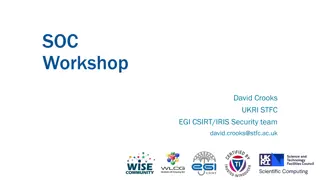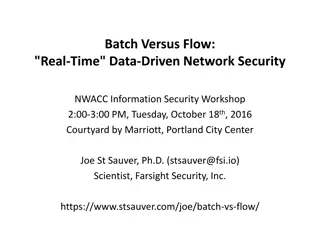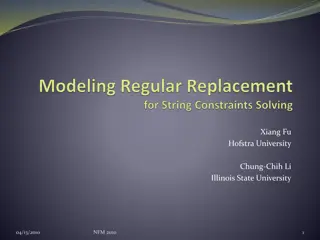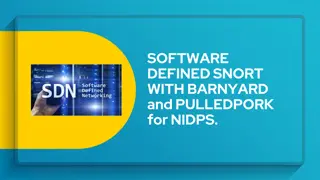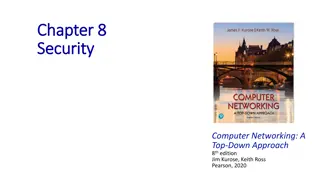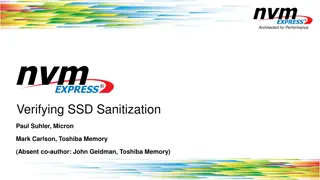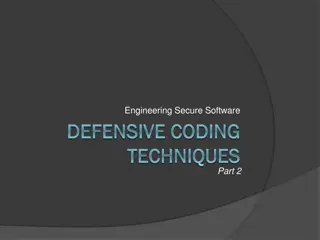Sanitizing PCAPs for Network Security
Explore the importance of sanitizing PCAP files in network security to protect sensitive information and maintain packet integrity. Learn about the goals, challenges, and tools involved in the sanitization process to enhance network analysis and cybersecurity efforts.
Download Presentation

Please find below an Image/Link to download the presentation.
The content on the website is provided AS IS for your information and personal use only. It may not be sold, licensed, or shared on other websites without obtaining consent from the author.If you encounter any issues during the download, it is possible that the publisher has removed the file from their server.
You are allowed to download the files provided on this website for personal or commercial use, subject to the condition that they are used lawfully. All files are the property of their respective owners.
The content on the website is provided AS IS for your information and personal use only. It may not be sold, licensed, or shared on other websites without obtaining consent from the author.
E N D
Presentation Transcript
Sanitizing PCAPs Fun and games until someone uses IPv6 or TCP Jasper Bongertz @packetjay
PCAP / PCAPng PCAP = Packet CAPture binary log of network packets old format, being replaced by PCAPng Written by tcpdump, Wireshark (using dumpcap), Snort, and other tools
Why sanitization? Similar to editing packets for packet replay Removing sensitive details User Credentials Network topology (IP addresses etc.) Device & software version information Vulnerable protocols Payloads
Sanitization Goal: Analysis Network analysts often require to keep packets only up to the TCP layer look at packet loss, timings, TCP being messed up by obscure middle boxes sometimes need details like FQDNs or URLs
Sanitization Goals: Malware Security Analysts/Researchers usually don't care that much about Ethernet / ARP / IPv4 / TCP / UDP headers Need to keep the malware / exploit delivery process intact: FQDNs, URLs, binary payloads
General Challenges Balance between removing details and remaining usefulness One packet vs. many Protocol complexity Procotol dependencies Defensive Transformation
Selected Tools Manual Editing Hex Editors Wireshark Edit Feature only in GTK at this time WireEdit
Selected Tools Batch Edit bittwiste, tcprewrite pktanon http://www.tm.uka.de/software/pktanon/ pcaplib http://sourceforge.net/projects/pcaplib/ TraceWrangler https://www.tracewrangler.com
Replacement Challenges Example: replacing an IPv4 Address Generate a new 32bit value and assign it Random, 1:1 rule, network rule Problems: Special IP addresses (0.0.0.0, 127.0.0.0/8) Multicast range (224.0.0.0/4) Mapping to the same replacement
Protocol challenges - TCP Well known vs. arbitrary ports Payloads may be split across multiple packets (uh oh!) Reassembly may be neccessary What about missing packets & retransmissions? Replacement size differences matter
Protocol challenges Example: IPv6 Neighbor Solicitation Address dependencies: MAC IPv6 Multicast
Protocol challenges Even DNS can be complicated Runs on UDP (mostly) but TCP sometimes, too Contains FQDNs in most cases Replacing FQDNs is not easy Subelements need be consistently replaced test.packet-foo.com -> something.secret.com abc.def.packet-foo.com -> wut.xyz.secret.com
Thanks! Questions? Mail: Web: Twitter: @packetjay jasper@packet-foo.com blog.packet-foo.com




